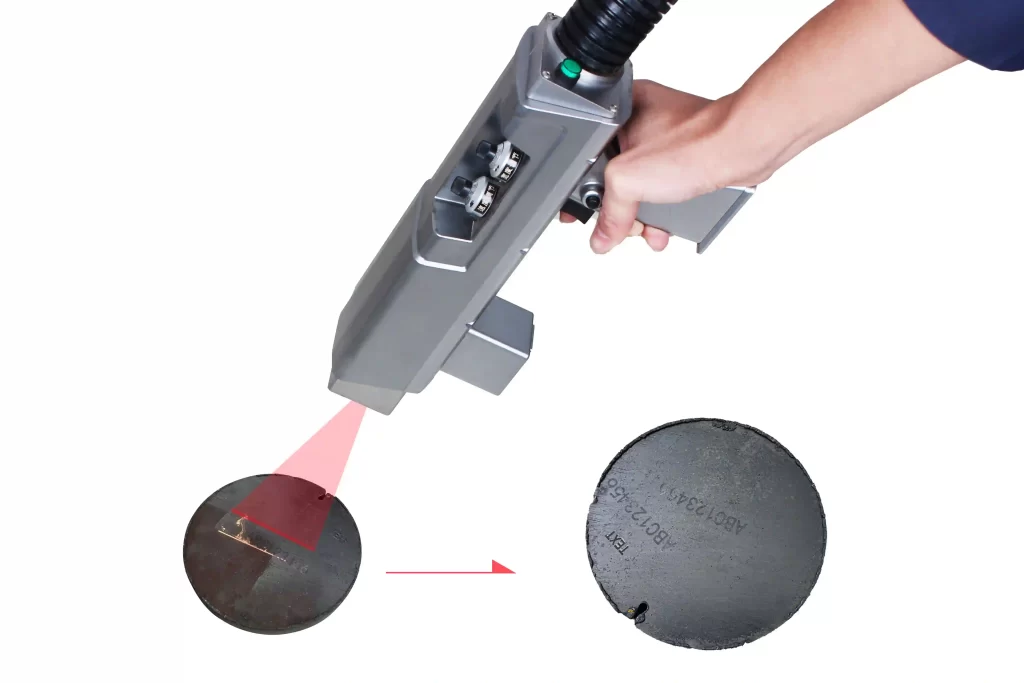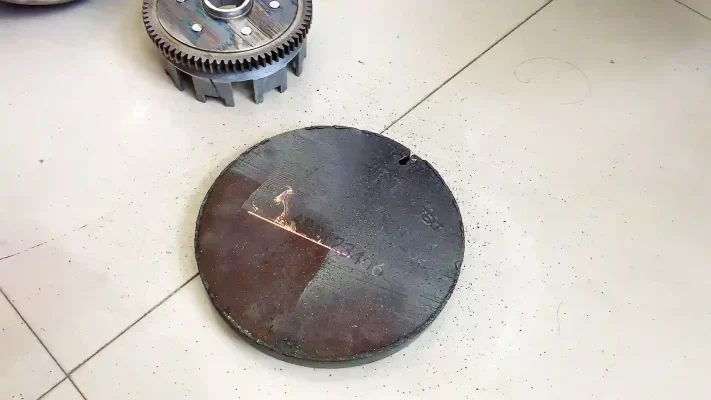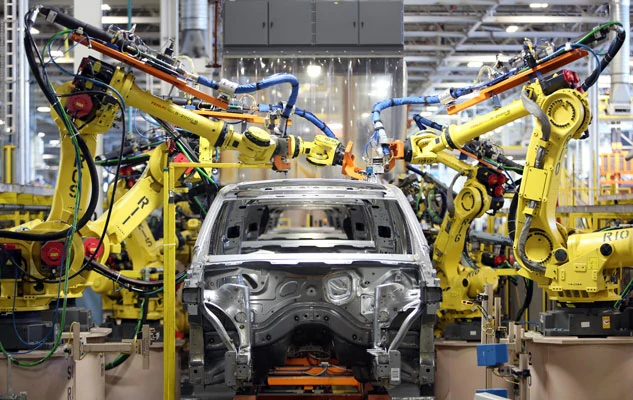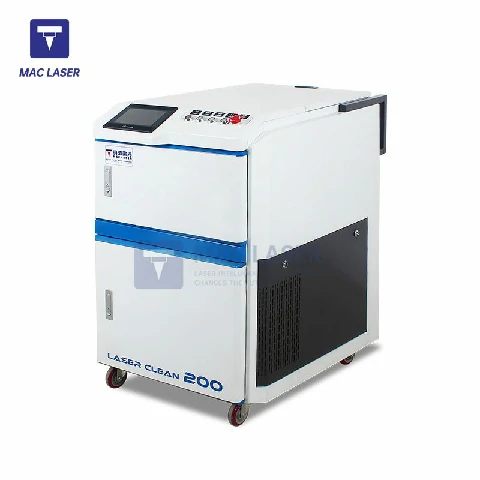INDUSTRIAL LASER CLEANING MACHINE: REVOLUTIONIZING SURFACE CLEANING AND IMPROVING EFFICIENCY
Cleaning industrial surfaces has always been a time-consuming and challenging task. The traditional cleaning methods, such as mechanical scrubbing, chemical cleaning, and high-pressure water jetting, have their limitations and drawbacks. They often damage the surfaces, generate hazardous waste, and require a lot of energy and resources.
Moreover, these methods are not suitable for cleaning complex geometries, delicate materials, and sensitive components. To overcome these challenges, in recent years Mac Laser has developed a new generation of technology: industrial laser cleaning machines.
Introduction: The Need for Industrial Laser Cleaning Machine
Industrial Laser Cleaning Equipment is a new type of cleaning technology that uses high-energy laser beams to remove dirt, rust, paint, coatings, and other contaminants from the surfaces of industrial components, machines, and structures. This technology has emerged as a game-changer in the field of surface cleaning and maintenance, as it offers several benefits over traditional cleaning methods.
The need for Industrial Laser Cleaning arises from the limitations of traditional cleaning methods, which often damage the surfaces, generate hazardous waste, and require a lot of energy and resources.
Industrial Laser Cleaning Technology addresses these challenges by providing a non-contact, non-abrasive, and eco-friendly cleaning solution that can remove even the toughest contaminants without damaging the surfaces or producing hazardous waste.



How Does Industrial Laser Cleaning Work?
Industrial Laser Cleaning works on the principle of laser ablation, which is a process of removing material from a surface by vaporizing it with a laser beam. The laser beam is focused on the surface to be cleaned, and its energy is absorbed by the contaminant layer.
This causes the layer to vaporize and expand, generating a shockwave that breaks the bond between the contaminant and the surface. The shockwave also removes the vaporized material, leaving behind a clean surface.
The laser beam can be adjusted to match the characteristics of the surface and the contaminant, such as wavelength, intensity, pulse duration, and spot size. This allows the operator to control the cleaning process and achieve the desired level of cleaning without damaging the surface.



Advantages of Industrial Laser Cleaning Machine
Non-contact and non-abrasive cleaning: Laser cleaning does not require any physical contact between the cleaning tool and the surface, which eliminates the risk of surface damage and wear. Moreover, laser cleaning does not use any abrasive materials, such as sand or chemicals, which reduces the generation of hazardous waste and the need for disposal.
Eco-friendly cleaning: Laser cleaning does not produce any chemicals, solvents, or other hazardous waste, which makes it a more sustainable and environmentally friendly cleaning method. Moreover, laser cleaning consumes less energy and resources than traditional cleaning methods, which reduces the carbon footprint and operating costs.
Precise and selective cleaning: Laser cleaning can be adjusted to match the characteristics of the surface and the contaminant, which allows the operator to selectively remove only the contaminant layer without affecting the underlying material. This makes laser cleaning ideal for cleaning delicate surfaces, such as electronics, optics, and aerospace components, without causing any damage.
Faster and more efficient cleaning: Laser cleaning can remove contaminants faster and more efficiently than traditional cleaning methods, which reduces the downtime and increases the productivity of industrial processes. Moreover, laser cleaning can clean hard-to-reach areas and complex geometries, such as corners, edges, and curves, which makes it a versatile and effective cleaning solution.
Applications of Laser Cleaning
Aerospace: Laser cleaning can remove paint, rust, and other contaminants from aircraft engines, wings, and fuselages without damaging the underlying material. This improves the aerodynamic performance and safety of aircraft, and reduces the maintenance costs and downtime.
Automotive: Laser cleaning can remove oil, grease, and other contaminants from engine parts, brake systems, and transmission components without damaging the surfaces. This improves the performance and efficiency of vehicles, and reduces the emissions and fuel consumption.
Electronics: Laser cleaning can remove solder, flux, and other contaminants from printed circuit boards, semiconductor chips, and LCD screens without damaging the components. This improves the quality and reliability of electronic devices, and reduces the defects and warranty claims.
Medical: Laser cleaning can remove biofilms, bacteria, and other contaminants from surgical instruments, implants, and medical devices without using any chemicals or abrasive materials. This improves the safety and efficacy of medical procedures, and reduces the risk of infections and complications.
Marine: Laser cleaning can remove barnacles, algae, and other marine fouling from ship hulls, propellers, and rudders without using any chemicals or abrasive materials. This improves the fuel efficiency and speed of ships, and reduces the drag and corrosion.
Laser Cleaning Applications
This process, commonly referred to as laser coating removal, utilizes vaporization of paint to preserve the underlying surface. Its applications include replacing part masking, cleaning painting tools, preparing welding areas, salvaging parts with paint defects, and other diverse uses.



